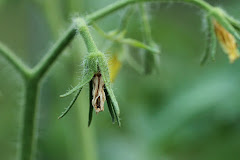 With colder weather setting in Thanksgiving week, it’s a good time to explore your underground growing success by digging root vegetables. Beets are a good example, the cool weather causing them to be extra sweet.
With colder weather setting in Thanksgiving week, it’s a good time to explore your underground growing success by digging root vegetables. Beets are a good example, the cool weather causing them to be extra sweet.‘Chioggia’ beets named for a town across the bay from Venice are pictured here. They are a 65 day, Italian home garden variety with festive red and white striped interior rings. Try them roasted with feta cheese. Sweet!
 Carrots are another mainstay. ‘Nelson’ (pictured) is a half-long variety well adapted to growing in our shallow, clay soils. A Nantes type, it grows 5 to 6 inches long in 58 days. It consistently produces smooth, high quality roots with great uniformity.
Carrots are another mainstay. ‘Nelson’ (pictured) is a half-long variety well adapted to growing in our shallow, clay soils. A Nantes type, it grows 5 to 6 inches long in 58 days. It consistently produces smooth, high quality roots with great uniformity. Make fresh harvested roots a part of your November vegetable menu.
Make fresh harvested roots a part of your November vegetable menu.You can store roots in the garden longer into December and even January by covering them with a blanket of mulch. A foot deep layer of fallen tree leaves weighted with wire fencing or staked with netting to hold them in place should do the trick.
Photo credits: Dug 'Chioggia' beet root, 'Chioggia' beet slices, dug 'Nelson' carrot - all Carl Wilson








